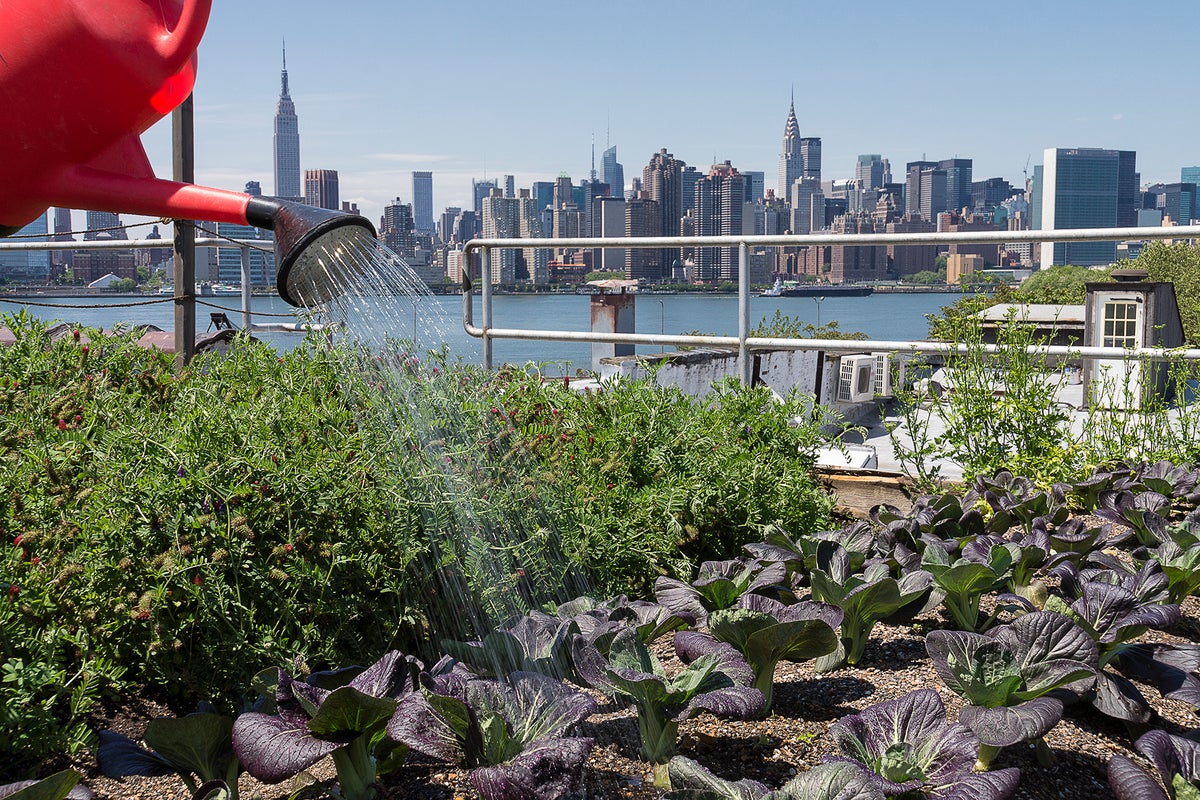The Ultimate Guide To City Blooming
The Ultimate Guide To City Blooming
Blog Article
The Definitive Guide to City Blooming
Table of ContentsThe Best Strategy To Use For City BloomingThe 20-Second Trick For City BloomingAll About City BloomingThe Main Principles Of City Blooming The Ultimate Guide To City Blooming

As you stroll the roads of the Bronx, Southside Chicago or East Oakland, you may see have even seen big stories of ripening fruits and veggies being gathered. What specifically are metropolitan ranches and neighborhood yards? Urban agriculture, urban farming, or metropolitan horticulture is the practice of growing, processing and dispersing food in or around metropolitan areas.
Usually, metropolitan farming as a technique is a larger financial investment than gardening. There are plenty of more hours spent right into the minutiae of farming, from the plant plan to the often tending of your beds. This time around dedication tackles a whole new significance once you understand the goal that is being functioned in the direction of and committed, specifically that of getting an abundant yield of crops to be eaten.
A neighborhood yard is a solitary tract gardened jointly by a group of people. Neighborhood yards use either private or shared stories on personal or public land while creating fruit, vegetables, and/or plants expanded for their appealing look. The standard model below is that a large group of people each add a relatively percentage of time to working their very own story, and receive the fruits of their labor therefore.
Excitement About City Blooming

There are community gardens, most of whom Small Axe Peppers has actually partnered with, that deal support to refugees, low-income households, kids teams, and neighborhood companies by aiding them develop and expand their very own gardens. The distinctions in between neighborhood garden and city ranch are nuanced, though in the end the same standard task takes placefood plant cultivation however within different organizational frameworks.
Urban ranches are generally much more business and technology oriented, with the key purpose of taking full advantage of yields and selling fruit and vegetables. Commercial urban farms are usually focused on expanding manufacturing on generally tiny acreage with developments in modern technologies such as tank farming, hydroponics, and greenhouses and might partner with an industrial kitchen area to create locally-produced value-added items such as jams and sauces.
The 9-Minute Rule for City Blooming
The produce is typically grown on a much smaller sized range and is taken home to consume at home or to share. By supplying much required eco-friendly areas in penniless, concrete urban areas, they permit the advantages of backyard horticulture to those lacking backyards, and serve as excellent instances of self-organization and area advocacy.
Some community gardens, often in city areas, move right into expanding for industrial use while some metropolitan ranches open their land for more socially conscious benefits. Despite just how you define and separate both, they are both favorable pressures forever in cities around America and the globe. They both use less complicated access to fresh, local fruit and vegetables; enhance a community's aesthetic; and function as excellent academic devices, teaching people where their food comes from. Small Axe Peppers has actually currently partnered with over 73 community yards around the United States.
As every one of Little Axe Peppers' warm sauces are sourced with peppers from community yards, your acquisitions directly help money these regional tasks (https://gravatar.com/danielnold94107). So, participate in the revolution by.
A close friend of mine lately commented in a conversation regarding horticulture that "It's intriguing, I've always assumed that farming as a practice is rather like gardening. As I spent even more and even more time in my Urban Agriculture class I have actually come to recognize that to say that horticulture is a small expansion of farming would be a bit of stretch.
10 Easy Facts About City Blooming Shown
They both focus on the treatment of plants for some goal that can be food, earnings or simply the satisfaction of the craft. They both require a monetary investment on top of a time financial investment, something that a great deal of individuals in our rapid paced life do not have a lot of.
We can see that the similarities are abundant, but are the distinctions sufficient to produce a difference? As a student at NYU I have the possibility to deal with the leave It Much better Foundation, a group that teaches standard nutrition and gardening to secondary school trainees. https://forums.hostsearch.com/member.php?263116-cityblooming. This experience offered me a thorough foray right into the world of amateur horticulture past what the majority of people have actually been in contact with
With these in hand, I can securely claim that these 2 activities are fairly truthfully different monsters. Farming as a technique is a bigger financial investment this website than horticulture. There are many much more hours spent right into the trivial matters of farming, from the crop plan to the often tending of your beds. This time dedication tackles an entire new meaning once you recognize the goal that is being functioned in the direction of and devoted, particularly that of acquiring an abundant return of plants to be eaten.
The typical gardener deals with his duties as a task instead of a necessity and because of this differentiates his or herself from the farmer. Nevertheless with this difference in hand, they are both soothing and peaceful exercises that anyone can get, which on its own should be a promotion for both.
The Only Guide to City Blooming
Something failed - container and raised bed gardening etc.. Wait a moment and attempt again Try once more
Report this page